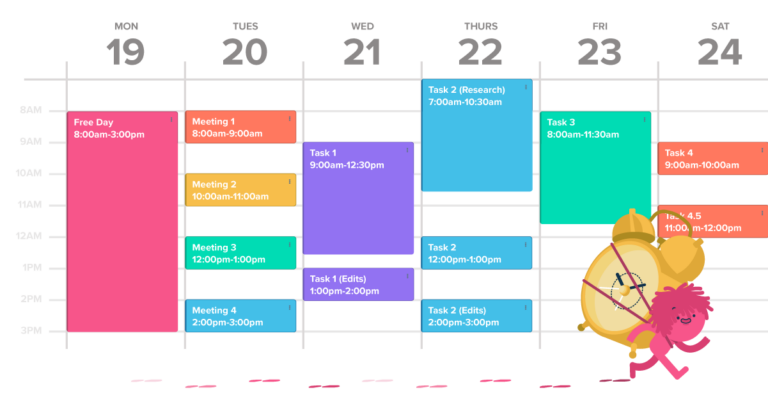Station 1 – Learning Style Theory
Psychologists simply love picking people’s brains, and I do not mean that in a bad way. Quite the opposite! The study of psychology has always attempted to understand how our minds work, what makes them similar and different, and how we can use our strong characteristics to improve our lives. As such, the study of knowledge and learning has been at the centre of the science since its conception. Regardless of whether they were looking at children or adults, psychologists have taken pains to categorise learning styles.
And that’s where we hit the first curb (I did tell you to hold on tight). Apparently, the train conductor has neither checked the itinerary nor defined the end destination, so we find ourselves at a multi-forked crossroad leading to different learning style theories, each of which claims to be the one.
(Right After) Station 1 – Learning Styles Definition
Don’t be alarmed. It’s our train conductor’s first journey and he has forgotten to greet the passengers. He had been informed that this train will be visited by several learning styles and he now wishes to acknowledge their presence.
But What Is a Learning Style?
We all experience the world in different ways. We each take different amounts of time to adjust to change or resort to a variety of methods to commit something to memory. Learning styles, as an umbrella term, refer to a series of theories that have tried to categorise and define the specifics of these different approaches. Individually, a learning style is a set of preferences based on cognitive, emotional, and environmental factors. In simple terms, your learning style is what works best for you – be that listening to instructions, reading through materials, taking notes, or getting your hands dirty with new tasks and checking the manual later.
Does It Matter Whether You Know Your Learning Style?
Let me be honest with you, if there was a simple answer to this, psychologists wouldn’t have grappled with it for more than 50 years. The idea is that if we are aware of our individual learning style, we can always attempt to adhere to it, activating our strongest mental and emotional faculties to perform a task well. However, in my layman’s opinion, I think that we gravitate towards these preferences regardless of whether we know their names. Still, in line with psychology, the styles we discuss today might be useful to you and your studies.
Now that we know what we’re going for, we’re ready to move on!
Station 2: Types of Learning Styles
Learning style theories have been popping out of various psychology books since the 1970s, some of them more successful than others. Many have applauded them; even more have criticised them. Attempts were made to introduce carefully adjusted teaching curricula that would fit all these styles, but it turned out that very few studies showed positive results. After all, it’s not teaching but learning styles that we’re talking about, so it all boils down to you and your own efforts.
Regardless, let’s take a look at the most prominent and promising theories:
First of all, we have to give a respectful nod to Mr David Kolb, who first introduced the learning styles theory in the 1970s. He approached learning as an experiential activity, i.e. how experiencing the materials aids learning. His theory speaks of Accommodators (those who prefer hands-on learning), Convergers (those who understand abstract theory but tend to put it into practice), Divergers (those who use personal experiences to form theories), and Assimilators (those who love theory and use theories to create their own abstractions).
While these may sound reasonable, Kolb took just as much flak for his theory as he did praise, but he irrefutably started a psychological trend of defining, adapting, and approaching learning styles.
Station 3: Picking up Passengers from Honey and Mumford’s Learning Styles
Peter Honey and Alan Mumford took Kolb’s theory as their starting point and attempted to adjust it to see how it works when put into practice. They also produced four learning types, which are still readily accepted and practised, even on our psychological train!
Activist Learning Style – Let’s Get Down to Business
Just as the train departs from its third station, having picked up four individuals of varying levels of eccentricity, it comes to a screeching halt. The train conductor announces that something has just given up in the engine and that the train is likely to be stuck for a while.
Mr Activist, dressed conveniently in lumberjack flannel and overalls, jumps right up and storms to the locomotive and starts tinkering (grease and gears flying everywhere, of course), all the while shouting out ideas to others about what may have gone wrong.
Activists learn best when they get to try their own hand at the task. They are not very fond of listening to lectures or tiring themselves out with theory. Instead, they prefer to learn by doing and, ideally, in a group setting. They are excellent brainstormers, love to bounce ideas off other people, can be very creative, and are not afraid of hard work.
If you find yourself diving headfirst into tasks and enjoy puzzles, riddles, group discussions, and roleplay games; you’re an Activist and you can jump right into the engine room, too! Boring lectures and tirades do not interest you very much, so it’s highly unlikely you’ll have much patience for any advice Ms Theorist has to offer.
Theorist – The Learning Style of Ponderers
Ms Theorist is not particularly impressed by Mr Activist’s urge to jump into the task and constantly demand feedback from others. Ms Theorist (a smartly dressed lady of undefinable age) does not really see the point of trying to fix the machine when she doesn’t know what make and model it is, what kind of fuel it runs on, or where she can find the right tools. She is currently consulting Google on locomotive blueprints and wondering what a pipe wrench is.
Theorists are at their best when they have theoretical and abstract concepts laid out for them, preferably supplemented with logical models, blueprints, and sketches. They love to read about theory at length and refuse to jump into deep waters without figuring out everything they can about it. They also prefer straight answers, do not like ambiguity, and tend to keep their work pin-sharp and completely separate from their emotions.
If you’re a Theorist, you will do well to equip yourself with all the explanations you can find on a subject, including lots of examples and well-argued points. You also like to know the reason behind anything you’re learning, so I suggest defining your short- and long-term goals for each study session and figuring out when you can apply all that theory.
Pragmatist – The One Who Needs the Why
While Ms Theorist is miserly doling out advice and asking questions about what Mr Activist sees inside the machine (nobody quite knows how he got in there), the Pragmatist, who denounces all gendered pronouns, is walking around lending a hand here and there and throwing an occasional answer to Ms Theorist.
Pragmatists prefer the middle-of-the-road approach to learning. They grasp theory pretty well but only ever enjoy it if they can see where it can be applied in practice. The Pragmatist on the train knows that they’ll be late for an important appointment if they don’t offer help, which is why they’re checking their own phone for resources (Ms Theorist has discovered an exquisite article on the history of locomotion and is currently reading that, and Mr Activist has hit a snag and is not quite sure where all that oil is coming from).
If you like to have a concrete reason and application of theory outlined for you, you’re a Pragmatist. You work best when working on case studies or discussing practical uses of theory.
Reflector Learning Style – The One in the Background
While all this ruckus is happening, the Reflector has blended into the background and is observing the situation, occasionally taking notes. A strange clang here, some odd numbers there and the Reflector has a pretty good idea of what’s going on – the engine is dead. A bit more research on the matter has inspired the Reflector to call for professional help, and now help is on its way.
Reflectors are – as the name suggests – observers by nature. They learn best if they are given time to consider all the facts and draw their own conclusions. Reflectors don’t like being thrust into situations where their opinion is required instantly, especially if they don’t have all the data. They work well in pairs when they can exchange feedback and loathe deadlines or rushed tasks.
Luckily for everyone, help arrived fairly quickly and the issue is fixed! It turns out that someone had dropped a strange vial into one of the air vents, which had caused damage to the machine. The crowd on the train is eyeing one another suspiciously. Mr Activist is ready to point fingers, while the Pragmatist refuses to start a fight as there’s no point. While Ms Theorist theorises about the reasons behind such frivolous behaviour, the Reflector withdraws to watch human psychology at work.
Station 4: Walter Burke Barbe et al. – Another Take on Learning Styles
The train may have moved, but the mystery still remains – who tried to sabotage the ride? The passengers settle on calling detectives to solve this as the endless squabbling is leading nowhere fast. At the next stop, they pick up three individuals, none of whom have a deerstalker hat or a pipe, much to everyone’s disappointment. They explain the situation and decide to wait for the resolution.
Visual Learning Style
The Visualist has pulled out a magnifying glass and is sneaking around, looking at every detail of the engine room. After observing and noting every detail of the passengers’ outfits, mannerisms, and luggage, the Visualist has pulled out a personal set of diagrams, maps, and printouts and is studying them.
Visualists learn best if they can absorb their materials visually. Images, diagrams, and charts are particularly inspiring and meaningful. When studying as a Visualist, I suggest ample use of mind maps – be as creative as you’d like to be!
Auditory Learning Style
The Auditor has no interest in looking at the engine. Oh no, the Auditor wants to talk to everyone involved, hear every detail, and then stalk off to listen to the sound of the engine.
If you are an auditory learner, you’d do well to record your lessons and play them back, because you tend to take information in most effectively when you’re listening to it. If you’re struggling to remember something, you might try reading it out loud to yourself. You’ll probably do well in group discussions, too.
Kinaesthetic Learning Style
This fella has found a common language with Mr Activist, and the two of them are currently banging about the engine room, trying to figure out how much liquid was spilt from the vial, where it could have gone, and, based on the speed of the train and the intensity of the wind, who the vial may belong to.
Kinaesthetic learners like a practical approach too. They experience the world through touch and action and learn best when moving. While this sounds unpleasant for library settings, it need not be. You can learn well by setting the rhythm of the sentences to the tapping of your feet, or you can develop gestures that represent certain concepts and implement them in your studying.
Station 5 – The Latecomer
While the detectives are working on the case, the train comes to an unexpected halt. Just as everyone starts to groan about yet another breakdown and how travelling by car is far more pleasant (heck, even walking would be at this point – fresh air and fitness), it turns out that there is just a latecomer to the party.
The Reader/Writer
The Reader/Writer is a journalist by trade, currently on the way to the land of learning styles and writing an article about unusual train journeys. Everyone, relieved that they have someone to complain to about this whole mess, runs to him and starts talking. The journalist takes everything down and suggests that the vial may belong to the train conductor, who apparently needed some Dutch courage on his first train ride but then panicked and tried to get rid of it. Case closed, the journey continues (this time smoothly).
The reading/writing learning style was added to Walter Burke Barbe’s model somewhat later. This is a person who prefers to take notes from the source – be it reading or listening to it. This learning style is a synthesis of the visual, auditory, and kinaesthetic learner, but it is still distinct as it works best when the learner writes things down and reads them again.
If this sounds like you, get yourself some nice highlighters and lots of paper, and you’ll be fine!
Using Different Learning Styles – Terminus
There are many attempts to categorise learning styles, and you may find yourself relating to multiple styles. In this case, worry not, embrace it. The key takeaway from knowing your learning style is that it can help you figure out how to study smarter and what works best for you. Your learning style will determine whether you:
- work better alone or in a group;
- prefer to take notes, listen to the material, or actively apply it;
- need to read more theory and apply it later or jump headfirst and think about theory if you get lost;
- need to have a good reason to study something.
Dear passengers, our journey ends here. I hope you’ve enjoyed travelling on the psychology train and picked up a few hints on how to study better. Have a good day, and we hope to see you again!







